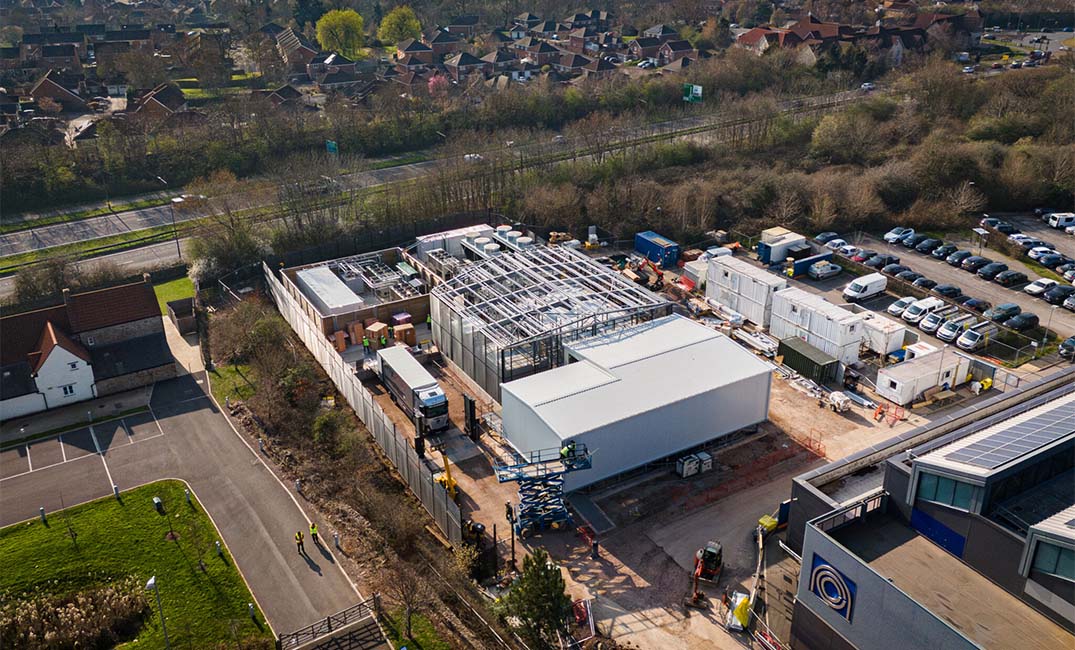The UK has officially joined the premier league of global AI infrastructure — and it’s not starting small.
Isambard-AI, the most powerful supercomputer to be built in the UK, is housed at the Bristol Centre for Supercomputing (BriCS).
“And as we press this switch to activate the UK’s most powerful supercomputer, we are embarking on Britain’s super future where AI contributes towards the delivery of better public services, greater public prosperity, deeper scientific discovery and stronger national security,” says Peter Kyle, UK secretary of state.
Some stats about Isambard-AI include:
- 21 exaflops of AI performance
- 5 448 Nvidia GH200 Grace Hopper Superchips
- Set to rank 11th worldwide on the latest TOP500 list of world’s fastest supercomputers
- More than 10x faster than the next-fastest supercomputer in the UK. More computing power than all other UK supercomputers combined
- Ranked fourth globally for energy efficiency
Isambard-AI gives UK researchers and businesses a once-in-a-generation leap in computing power. It’s a platform to accelerate breakthroughs in:
- AI-driven drug discovery
- Advanced climate modeling
- Materials science
- Large language models (LLMs) tuned to UK languages and laws
Isambard-AI is backed by £225-million in government investment and built with Nvidia, HPE, the University of Bristol and others.
Named after Isambard Kingdom Brunel — the 19th-century engineer who reshaped the UK with railways, bridges and ships — Isambard-AI has gone from conception to deployment in just under two years, including the construction of the modular data centre in 48 hours.
The supercomputer is already running live projects aligned with national priorities, including:
- Nightingale AI: A sovereign, multimodal health foundation model trained on National Health Service (NHS) data to support earlier diagnoses and personalised care.
- BritLLM: A UK-developed LLM project supporting British languages like Welsh, alongside English, to promote inclusivity and better public service delivery in healthcare, education and public services.
- UCL Cancer Screening AI: Developing the first scalable AI system for prostate cancer detection via MRI, aiming for faster diagnoses and tailored treatments.
- EIMCRYSTAL (University of Liverpool): Using AI to search 68-million chemical combinations to discover greener, more sustainable industrial materials — reducing reliance on rare or toxic inputs.
- EgoAI (University of Bristol): Using AI to analyse recordings from wearable cameras and other smart devices to help people perform tasks better at home. This holds immense promise for assisting dementia patients in the future.
The team built Isambard-AI is half the time a project of this scale would normally take. They broke ground in June 2024 and by June 2025, the full 5-megawatt system was live: built, tested and running at a global scale.
“We treated the project like a high-performance processor,” says Simon McIntosh-Smith, director at BriCS. “We executed everything in parallel.”
Key to this speed were:
- Parallelised project management
- Early procurement of critical hardware, particularly GPUs
- Prefabricated modular data halls shipped in and assembled in days
- Relentless optimisation of delivery timelines
Isambard-AI is not just fast — it’s also green.
- Ranked fourth globally on the Green500 list
- Powered by NVIDIA GH200 Superchips, among the most efficient chips available
- Direct liquid-cooling architecture from HPE packs 440 GPUs per cabinet
- Hybrid cooling towers enable >90% dry, waterless operation
- Entirely powered by zero-carbon electricity
- Engineered with the potential to recycle waste heat
- Overall power usage effectiveness below 1.1, among the best ever achieved

An aerial view of the Isambard-AI construction site, illustrating the scale of the modular data center build and the rapid progress made in creating the UK’s most powerful AI supercomputer.
Featured picture: A technician carefully installs a server blade equipped with direct liquid cooling, demonstrating the hands-on precision involved in assembling Isambard-AI’s advanced computing infrastructure.

